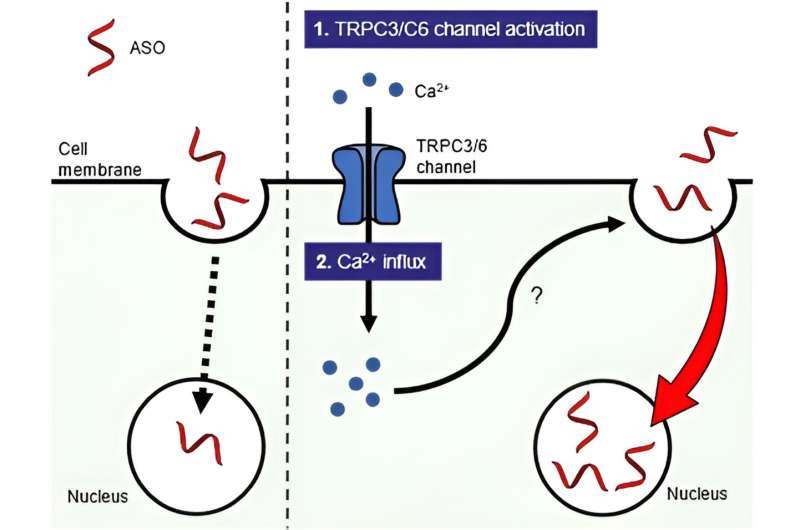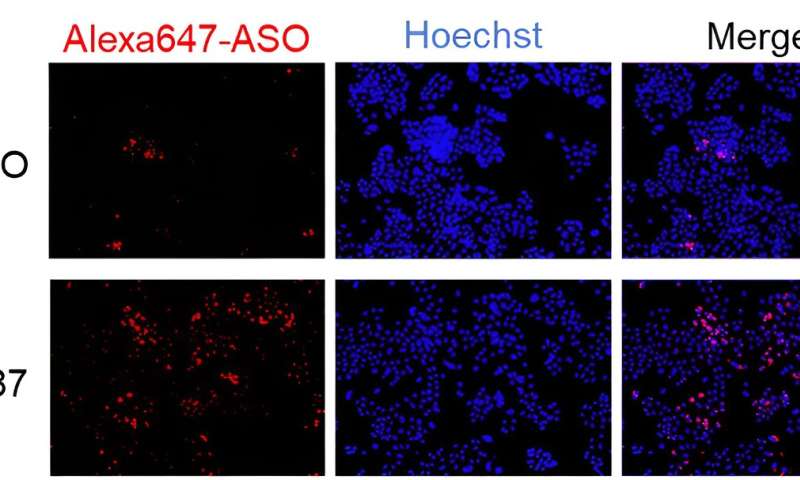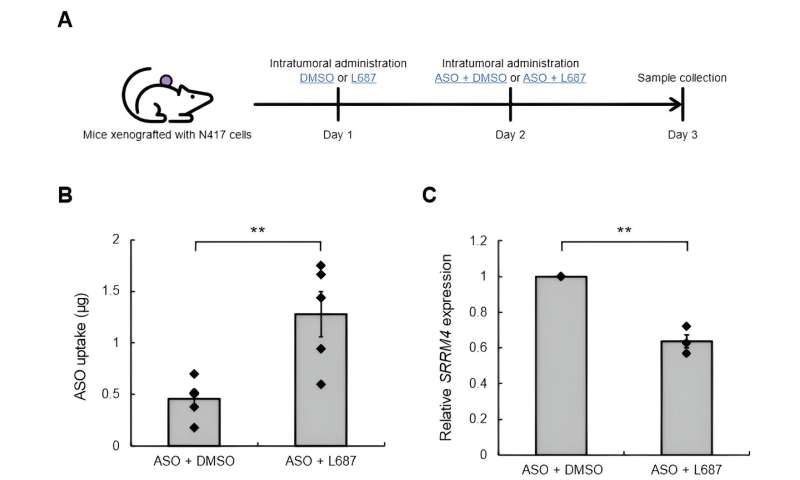This article has been reviewed according to Science X's editorial process and policies. Editors have highlighted the following attributes while ensuring the content's credibility:
fact-checked
peer-reviewed publication
trusted source
proofread
An effective drug delivery system for next-generation treatments to hitch a ride in cancer cells

Antisense oligonucleotides (ASOs) are next-generation drugs that can treat disease by blocking the transfer of harmful messages from our genes. In people with cancer, ASOs have the potential to block messages that encourage the growth and spread of the tumor. However, ASOs aren't used for treating cancer yet. They must first get delivered inside cancer cells, but the cancer cells won't let them in.
Finding an effective ASO delivery system is a major challenge. Cancer cells have gatekeeper molecules that stop unwanted substances from entering. Although investigators have tried many ways of getting ASOs past the gatekeepers, success has been limited.
Now, in a study recently published in the journal Nucleic Acids Research, researchers from Osaka University have discovered a way to deliver ASOs to their targets inside cancer cells. The team synthesized a new compound, named L687, which opens specific calcium permeable channels on the surface of cancer cells. When the calcium flows into cells through the open channels it tells the cells to let in the ASOs.
"We discovered that we could selectively activate the TRPC3/C6 calcium permeable channels with the activator L687," explains lead author Hiroto Kohashi. "We then found that combination treatment with L687 and ASO promoted efficient uptake of ASO into cancer cells during laboratory tests and tumor cells inside the mouse. As a result, target gene activity was suppressed and ASO efficacy was enhanced."
-

Fluorescence imaging analysis of ASO incorporated into cells treated with L687. Credit: 2024 Nagata et al., A novel transient receptor potential C3/C6 selective activator induces the cellular uptake of antisense oligonucleotides., Nucleic Acids Research -

Effects of L687 on ASO uptake and activity in tumours of xenograft mice. Credit: 2024 Nagata et al., A novel transient receptor potential C3/C6 selective activator induces the cellular uptake of antisense oligonucleotides., Nucleic Acids Research
Until now, ASOs have mainly been used to treat incurable diseases and had to be delivered into the liver or spinal fluid. According to the Osaka team's research, L687 is an effective drug delivery system that may extend the benefits of ASO treatment to other parts of the body.
"We hope that the results of our research will lead to significant progress in the development and delivery of ASOs and similar gene-targeting drugs for treating cancer," says senior author Masahito Shimojo.
The team believes that L687 could be a particularly effective way of delivering ASO therapy to lung or prostate cancers. These cancers have many TRPC3/C6 calcium permeable channels that can be opened by L687, potentially revealing new targets for these next-generation therapies.
More information: Hiroto Kohashi et al, A novel transient receptor potential C3/C6 selective activator induces the cellular uptake of antisense oligonucleotides, Nucleic Acids Research (2024). DOI: 10.1093/nar/gkae245





















